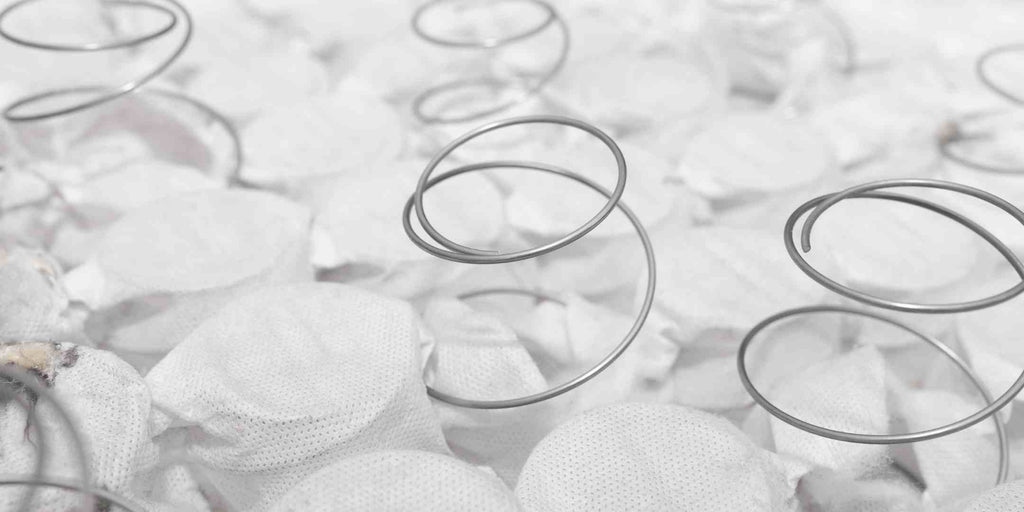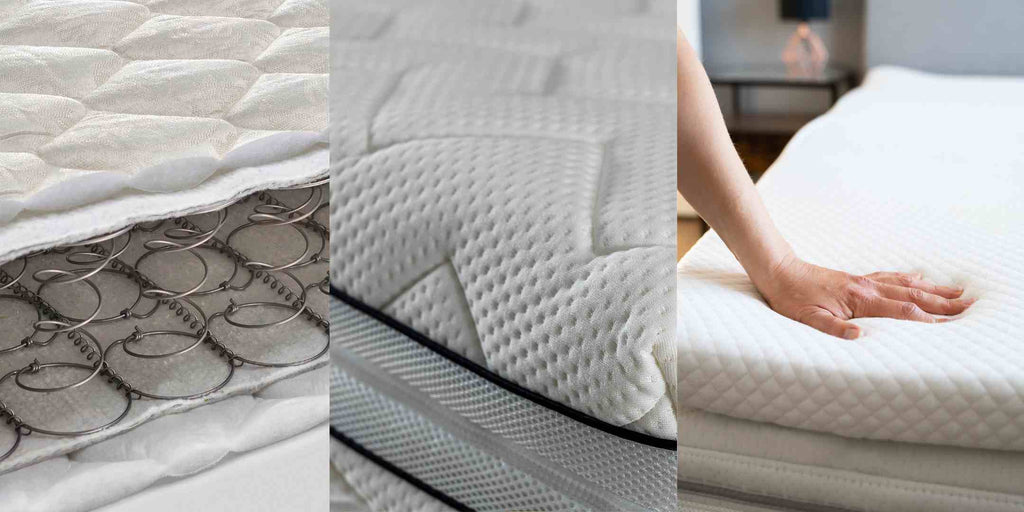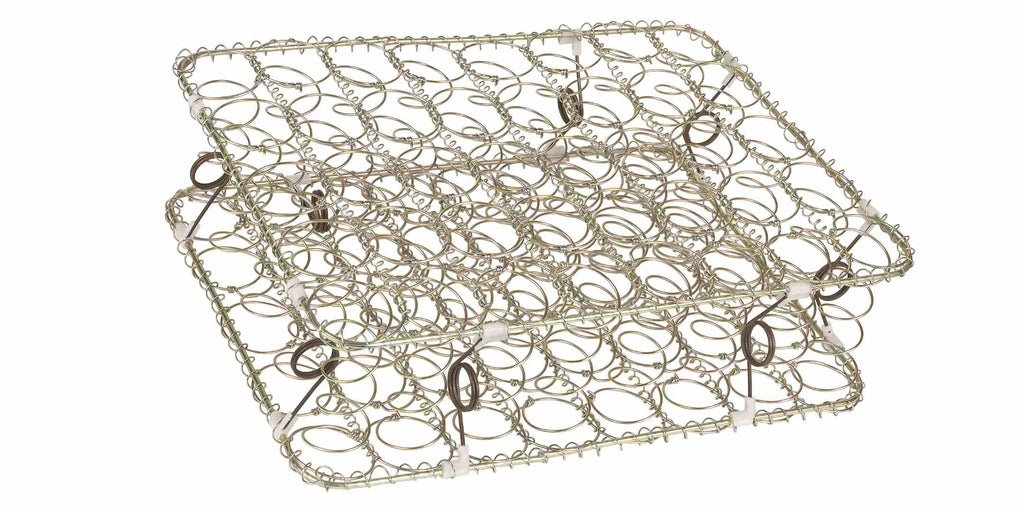A good night's sleep is essential for our overall well-being, and the quality of your mattress plays an important role in ensuring that you wake up feeling refreshed and rejuvenated. However, if you've ever been tossing and turning, uncomfortable, or waking up with aches and pains, one common culprit could lurk beneath you – the springs in your mattress.
Do you ever wonder what the common reasons why those springs digging into your back, hips, or shoulders disrupt your precious slumber are? Understanding these factors can help you choose a mattress that provides the support and comfort you need for a restful night's sleep. So, if you've ever wondered why you can feel springs through mattress, read on to uncover the key factors at play and discover potential solutions to ensure a more comfortable night's rest.
The Problem: Feeling the Springs in Your Mattress

Feeling the springs in your mattress is a common issue that can lead to discomfort and disrupted sleep. This problem occurs when the inner springs of a mattress start to protrude or lose their support due to factors such as mattress age, poor quality construction, inadequate thickness, and the mismatch between your body weight and mattress firmness. These springs can create pressure points on your body, leading to aches and pains, and they can also affect the overall support and comfort of your mattress.
How the Type of Mattress Affects Spring Sensitivity

Innerspring Mattress
Innerspring mattresses are most likely to cause spring sensitivity because their primary support comes from springs, which can sometimes be felt if comfort layers do not adequately cushion them. Thicker comfort layers or a mattress topper can be added to reduce this sensitivity.
Memory Foam Mattress
Memory foam mattresses are excellent at minimising spring sensitivity. The viscoelastic foam conforms closely to your body, reducing the chances of feeling the springs beneath. However, this sensation might still occur if the mattress is too thin or has low-quality foam layers.
Latex Mattress
Latex mattresses have some bounce, but they typically provide enough cushioning and support to prevent feeling the springs underneath. The quality and thickness of the latex layers play a role in determining spring sensitivity.
Hybrid Mattress
Hybrid mattresses can vary in spring sensitivity, depending on the specific design and materials used. Substantial memory foam or latex layers in a hybrid can mitigate spring sensitivity, but it's essential to consider the quality and thickness of these comfort layers.
How Mattress Age Impacts Spring Support?

Over time, the age of a mattress can significantly impact its spring support. The springs in a mattress are designed to provide a certain level of firmness and support, but with regular use and wear, they may lose their original resilience. As the mattress ages, the coils can become compressed or develop weak spots, causing uneven support. This can lead to an increased likelihood of feeling the springs through the surface of the mattress, which can be uncomfortable and disruptive to sleep.
Signs of a Worn-Out Mattress

Sagging or Indentations
If you notice visible sagging or body impressions on the mattress surface, it's a clear sign of wear, leading to uneven support and discomfort.
Lumps or Bulges
Lumps and bulges can develop as the internal components of the mattress deteriorate, and these irregularities can make it easier to feel the springs or other structural elements.
Increased Discomfort
If you're experiencing discomfort, pain, or stiffness when you wake up, and this discomfort persists throughout the day, it could be due to a worn-out mattress.
Loss of Support
A decrease in the mattress's ability to provide proper support, especially in areas like the lumbar region or hips, can indicate ageing springs and other materials.
Increased Allergens
Over time, mattresses can accumulate dust mites, allergens, and other particles, exacerbating allergies and negatively affecting sleep quality.
When to Consider Replacing Your Mattress

The decision to replace your mattress should be considered based on your comfort and the condition of the mattress rather than a strict timeline. Regularly inspect your mattress for signs of wear and evaluate your sleep quality to determine when it’s time for an upgrade to ensure better support and a more restful night’s sleep. Nevertheless, here are some general guidelines:
Every 7-10 Years
Innerspring and traditional coil mattresses may need replacement every 7-10 years, as the springs tend to wear out faster.
Are coil mattresses bad for you?
Coil mattresses aren't necessarily "bad for you," but their suitability depends on personal preference, sleep habits, and health considerations. They offer firm support and airflow for temperature regulation but may cause discomfort due to pressure points and motion transfer. Factors like coil quality, hygiene, and noise can also influence their suitability.
Every 10-15 Years
Memory foam and latex mattresses typically have a longer lifespan and may last 10-15 years.
Based on Signs of Wear
Regardless of the type, if you notice any of the signs mentioned above, it's a good indication that your mattress needs replacement, even if it's within the typical lifespan.
Changes in Your Sleep Quality or Comfort
If your sleep quality has declined, and you no longer find your mattress comfortable, it's time to consider replacing it.
The Importance of Mattress Construction and Materials

The construction and materials used in a mattress are critical factors in determining its overall quality and longevity. Here's why they matter:
Support and Comfort
The materials in the mattress, such as coils, foam layers, and padding, directly impact how well it supports your body and provides comfort. High-quality materials are designed to maintain their structure and support over time, ensuring a consistent sleeping surface.
Durability
A well-constructed mattress is built to withstand regular use and maintain its performance for an extended period. Low-quality materials or subpar construction can lead to premature wear and tear, resulting in a shorter lifespan.
Pressure Relief
Quality materials, like memory foam or latex, relieve pressure by contouring your body's shape, essential for preventing discomfort and improving sleep quality.
Motion Isolation
Quality mattresses are often better at isolating motion, meaning you're less likely to be disturbed by your partner's movements at night.
Temperature Regulation
The choice of materials can influence how well a mattress regulates temperature, and high-quality mattresses often incorporate features to enhance breathability and keep you cool during sleep.
What are the Signs of a Low-Quality Mattress to Look Out For?

Visible Wear and Tear
Obvious signs of poor quality include sagging, lumps, and noticeable wear on the mattress surface.
Inferior Materials
Low-quality mattresses may use subpar foams, thin padding, or cheap springs that degrade quickly.
Lack of Support
If you consistently wake up with aches, pains, or discomfort, it may be due to inadequate support, a common issue with low-quality mattresses.
Motion Transfer
A mattress with poor-quality materials may transmit motion easily, disrupting your partner's movements.
Short Lifespan
If your mattress deteriorates significantly within a few years, it likely lacks the durability of high-quality options.
How to Choose a High-Quality Mattress?

Research and Reviews
Read customer reviews and expert opinions to gain insights into the mattress's construction, materials, and performance.
Material Selection
Opt for well-known, reputable materials like high-density memory foam, natural latex, or quality innerspring coils.
Consider Your Sleeping Position
Choose a mattress that aligns with your preferred sleeping position (back, side, or stomach) for optimal support and comfort.
Warranty
A solid warranty, typically 10 years or longer, indicates a manufacturer's confidence in their product's quality.
Brand Reputation
Established and well-regarded mattress brands are often a safer bet for quality.
Ask Question
Don't hesitate to ask the retailer or manufacturer about the mattress's materials, construction, and certifications (such as CertiPUR-US for foam mattresses or OEKO-TEX for textiles).
Preventative Measures to Avoid Feeling the Springs

You can take several preventative measures to prevent the discomfort of feeling the springs in your mattress. These measures are beneficial if you're not yet ready to replace your mattress but still want to improve your sleeping experience:
Mattress Topper
A mattress topper is an additional layer of cushioning that can help reduce the sensation of springs. Memory foam, latex, or thick fibre-filled toppers are good choices, as they can add extra comfort and support.
Mattress Pad
A mattress pad can also provide some additional cushioning. While not as thick as a topper, it can still help alleviate the feeling of springs and improve overall comfort.
Body Pillows
Placing body pillows or extra pillows strategically on top of the mattress can help distribute your body weight more evenly, reducing pressure points and the likelihood of feeling the springs.
Rotate and Flip
If your mattress is double-sided, regularly rotate and flip it as recommended by the manufacturer because this can help ensure more even wear and potentially minimise spring sensitivity.
Regular Maintenance
Vacuum your mattress regularly to remove dust, allergens, and debris that can accumulate and affect your comfort so you can keep your mattress clean and well-maintained to ensure it ages more gracefully.
Proper Mattress Care
Follow the care instructions provided by the manufacturer to maximise the lifespan of your mattress, which may include rotating, flipping, or cleaning the mattress as recommended.
Conclusion

Remember that a good night's sleep is essential for your physical and mental health, and addressing the feeling of spring can lead to more restful nights and better overall health. Whether you choose to enhance your current mattress or find a new one, prioritising your sleep comfort is an investment in your daily vitality and well-being.
Disclaimer: All the information, including the texts, images, and other materials on this website, are for educational purposes only. While we aim to provide accurate information, nothing on the Megafurniture website should be considered a replacement for medical advice, diagnosis, or treatment. Always consult a qualified medical professional before making any decisions regarding your health.








